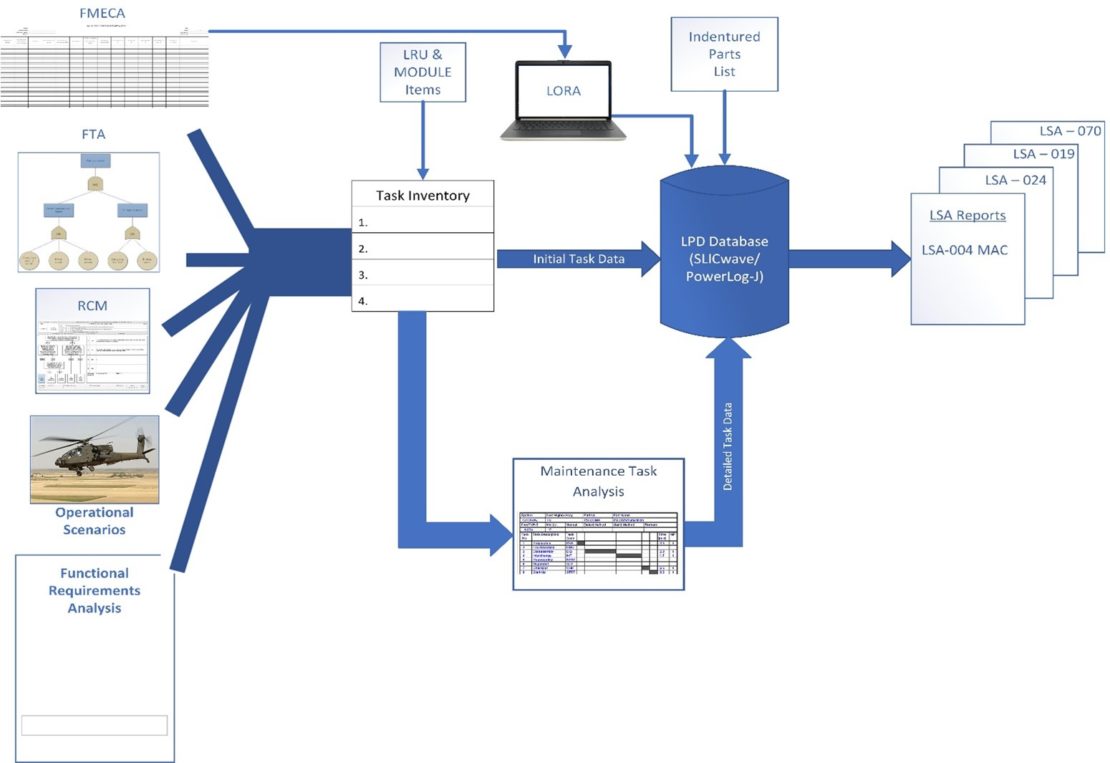Back to Blog
Product Support Analysis (PSA) – Task Inventory

How Do You Develop A Task Inventory for New Products and What Do You Do with It?
When last we left our discussion of the PSA Process as described in SAE TA-STD-0017, we had just figured out how to accomplish Activity 9, Functional Requirements Analysis. This activity resulted in an understanding and documentation of the operations, maintenance, and support functions associated with the introduction of our new product.
The next step in the PSA process is to take these functions and decompose them into tasks that identify the human performance requirements for successful accomplishment of the operations, maintenance, and support activities. The Task Inventory then documents the resulting tasks necessary to successfully accomplish the identified functions for our product and is implemented using the guidance of SAE TA-STD-0017, Activity 9.8. This task list becomes the basis for defining the scope of maintenance and support tasks that will be further analyzed by the Maintenance Task Analysis (MTA) effort to identify the support resources, skills, and manpower needed to ensure that a robust and responsive support system is established for the newly fielded product.
So, how do we accomplish the decomposition of functions to identify task requirements? Unfortunately, there are no specific analysis or documentation instructions in SAE TA-STD-0017 and many Logistics Engineers may not be accustomed to working this early in a development program, with limited product definition and engineering source data. We must be creative and explore the other concurrent development program activities to uncover useful engineering and business analysis results that support the PSA efforts, prior to the manufacturing of the first production or test units. The Defense Acquisition Guidebook (reference DAU website) describes the activities and schedule for each phase of a Major Capability Acquisition program and represents a reliable resource for identification of supporting activities.
The Functional Requirements analysis results serve as the primary input to defining the Task Inventory. Along with a definition of the operating scenarios (CONOPS) and some product configuration data, we can directly scope the task listing. Also, by identifying complimentary program activities, we recognize the Reliability and Maintainability Engineering program as an activity that is done early in the program and provides insights into how the product will fail, performance consequences, and the maintenance actions needed to bring the product back to fully functional status. The specific development program activities that can be leveraged to provide input to PSA activities include Failure Mode, Effects, and Criticality Analysis (FMECA), Fault Tree Analysis (FTA), and Reliability Centered Maintenance (RCM) analysis. FMECA will support identification of potential preventive and corrective maintenance actions. An assessment of the FTA results, also being conducted and documented by Reliability Engineering, is accomplished to address critical safety functions, and highlight diagnostic and maintenance tasks intended to correct component failures experienced in the field. RCM analysis results, which are based on the FMECA, will identify and document preventive maintenance tasks intended to maintain the inherent reliability of the product hardware and associated mission-critical functionality.
The resultant task list contains all corrective and preventive maintenance tasks that the operator, maintenance personnel, Government civilian personnel, or Contractor personnel will perform over the product lifecycle. Operations, maintenance, and other support tasks identified through analysis of the functional requirements and review of the program PSA results, as presented in Figure 1, are organized and documented by task classification, Functional Group Code (FGC), product component, function, and maintenance level using a format similar to the Maintenance Allocation Chart (MAC). It is important to note that the initial assignment of task maintenance level will be based on similar items currently in the field and supported by existing infrastructure. These assignments will be updated with Level of Repair Analysis (LORA) results as the PSA efforts are matured.

The resulting Task Inventory is composed of task descriptions that are clear, concise, applicable, and written in operator or maintainer language. The task description starts with an action verb that clearly defines what is to be accomplished, using the guidance provided in GEIA-STD-0007, Logistics Product Data (LPD). The task description also identifies the product component to be acted upon, and any qualifying text that limits the task scope or distinguishes the task from other similar tasks.
The information contained in the Task Inventory listing will be incorporated into the LPD database and be associated with the appropriate product structure using the C Entities – Task Analysis. The LPD database is used to support submittals of Logistics Support Analysis (LSA) Reports defined in SAE TA-HB-0007-1A, specifically the LSA-004 MAC and LSA-024 Maintenance Plan, which provides the necessary data for a thorough maintenance planning activity – the next steps in the PSA process.
Article Authored by Stephen Brunner






